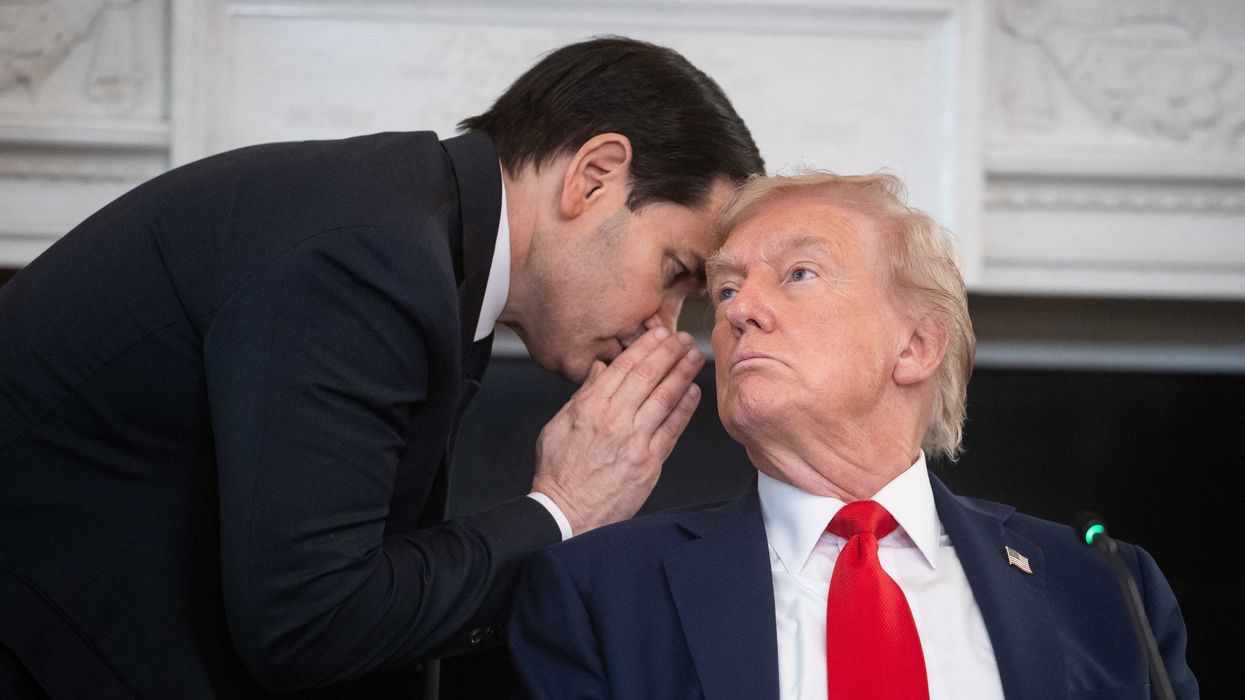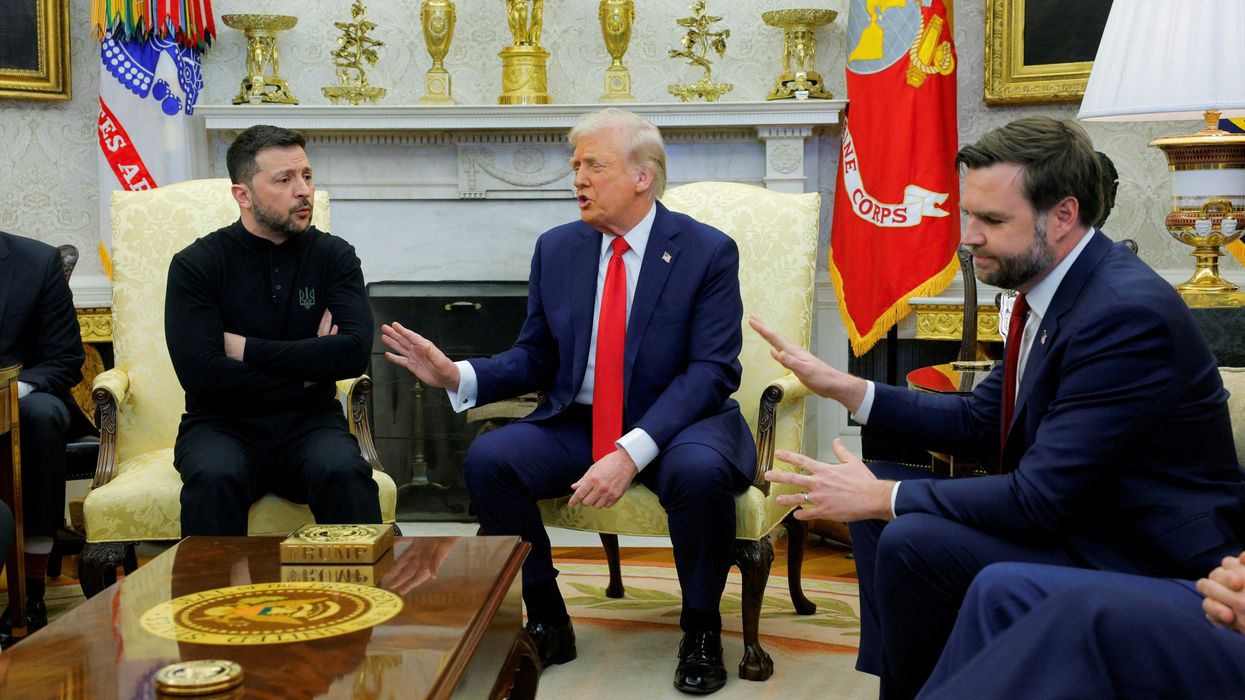New Zealand apparently wants to run with the pack now countering China — and may seek to join AUKUS, too.
Those are the key takeaways from a barrage of new plans to reshape New Zealand’s defense policy. Not just one, but three new reports were released simultaneously on Friday morning by the country’s Minister of Defence, Andrew Little.
These include New Zealand’s inaugural National Security Strategy, along with a military-focused Defence Policy and Strategy Statement. A third document, the "Future Force Design Principles," spells out some further general recommendations for reconfiguring New Zealand’s military.
Collectively, the publicly released plans – which run to over 12,000 words on 82 pages — add up to the biggest shake-up for New Zealand’s foreign and defense policy in a generation.
New Zealand currently spends around 1.4 percent of its Gross Domestic Product (GDP) on its military, according to figures from the World Bank. But spending is already on the way up: Labour announced a $NZ747 million cash injection in its recent May budget — a significant boost in the context of New Zealand’s $NZ5.3 billion annual defense outlay and the country’s population of just five million people.
The pace of change is also accelerating: the Defence Policy Review panel that the Labour Government appointed in 2022 to assess the country’s military capabilities was not originally scheduled to report back until mid-2024. Andrew Little fast-tracked the review after he became defense minister earlier this year, following then Prime Minister Jacinda Ardern’s resignation.
The new defense blueprint has not come entirely out of thin air. A hawkish new assessment was released in 2021, which was followed by New Zealand’s guest participation at NATO summits in 2022 and 2023.
A major theme of the new Defence Policy and Strategy Statement is a drive for New Zealand’s military to become “combat-capable” and expand its activities in the contested Pacific region located immediately to New Zealand’s north. It’s clear from the text that “improving the effectiveness of our combat and other military capabilities” will mean spending a lot more on both personnel — which received the bulk of the boost in May — and new military hardware. New Zealand recently took possession of the last of four Boeing P-8A Poseidon aircraft that were ordered in 2018, at a total cost of over $NZ2 billion.
China, meanwhile, is mentioned by name in the new documents only around a dozen times, but it’s crystal-clear that Beijing is the main target of New Zealand’s updated blueprint.
According to the National Security Strategy, “China’s rise is a major driver of geopolitical change.” The authors argue that Beijing is becoming “more assertive and more willing to challenge existing international rules and norms” — and is employing “economic coercion” to achieve its aims.
By U.S. or Australian standards, this might seem par for the course — even on the mild side — when it comes to characterizations of Chinese foreign policy. But for Wellington, which has largely kept on good terms with Beijing even as China’s relations with the West have deteriorated, the words and the overall tone and substance of the documents reflect an historic shift.
For decades, New Zealand has prided itself on what has become known as an “independent foreign policy.” The positioning emerged in the 1980s after the United States suspended its obligations to New Zealand under the ANZUS Treaty (made up of Australia, New Zealand and the U.S.), in retaliation for the introduction of a nuclear-free policy by the Fourth Labour Government that then held power.
Fortuitously, the end of the Cold War was just around the corner, and for the next three decades, New Zealand took full advantage of the resulting new opportunities that opened up everywhere, from Beijing to Bogotá.
That era now seems to be over.
A key theme threading through the just-announced plans is the idea that New Zealand needs to “partner” with “like-minded countries.” The National Security Strategy suggests these are predominantly Five Eyes and Western nations, including Australia, the United States, United Kingdom, Canada, EU members, Japan, and South Korea.
Unsurprisingly, China does not make the cut.
New Zealand’s backing of more hawkish Western foreign policy positions comes despite China being the country’s biggest trading partner by a significant margin. Over a quarter of New Zealand’s exports head to China every year.
One of the biggest talking points from the new roadmap is an apparent green light for New Zealand to join ‘Pillar Two’ of the AUKUS pact that currently involves Australia, the United Kingdom and United States. That is signified by the line, “AUKUS Pillar Two may present an opportunity for New Zealand to cooperate with close security partners on emerging technologies,” which is buried deep in the Defence Policy and Strategy Statement.
Little, the defense minister, appeared to open the door to AUKUS in March when he said New Zealand would be “willing to explore” joining a new chapter of the pact that is focused on advanced technologies.
Until then, New Zealand’s position has been to steer clear of AUKUS because of its nuclear dimension — which would cross the red line set in the 1980s by the nuclear-free policy — but also because joining the deal would run counter to the spirit and letter of New Zealand’s independent foreign policy.
But there seems to have been a tug-of-war of sorts inside the Labour Government over AUKUS.
Nanaia Mahuta, the foreign minister, has been far less keen on New Zealand’s involvement — when U.S. Secretary of State Antony Blinken recently visited Wellington, the minister told local media “I’ll be really clear, we’re not contemplating joining AUKUS.”
Chris Hipkins, the Prime Minister, has been somewhere in the middle. In May, he said the question of New Zealand joining AUKUS was “purely hypothetical.”
But during his press conference with Antony Blinken, the Prime Minister said New Zealand was “open to conversations” about AUKUS membership.
With New Zealand’s general election to be held on October 14, any decisions on AUKUS will be for the next Government to take.
There is an irony that a Labour Government is now paving the way for New Zealand to join AUKUS, three decades after it effectively elected to take the country out of ANZUS. After all, it has always been Labour that has flown the flag for New Zealand’s “independent foreign policy” most strongly.
Helen Clark, a Labour Prime Minister who served from 1999-2008, reacted furiously to the hawkish new plans released on Friday. She wrote on Twitter that the blueprint suggested New Zealand was “abandoning its capacity to think for itself and is instead cutting & pasting from Five Eyes partners,” and that there was an “orchestrated campaign” to join the next stage of AUKUS.
With no final decisions made on AUKUS, there is certainly still time for New Zealand to change course and take a different path more in keeping with the independent foreign policy tradition. This could include taking a role focused more on de-escalation, dialogue, and diplomacy in an effort to lower the geopolitical temperature as tensions build in the Indo-Pacific.
New Zealand’s new National Security Strategy describes itself as “just the beginning.” It is certainly the opening salvo, but it is unlikely to be the final word.
















